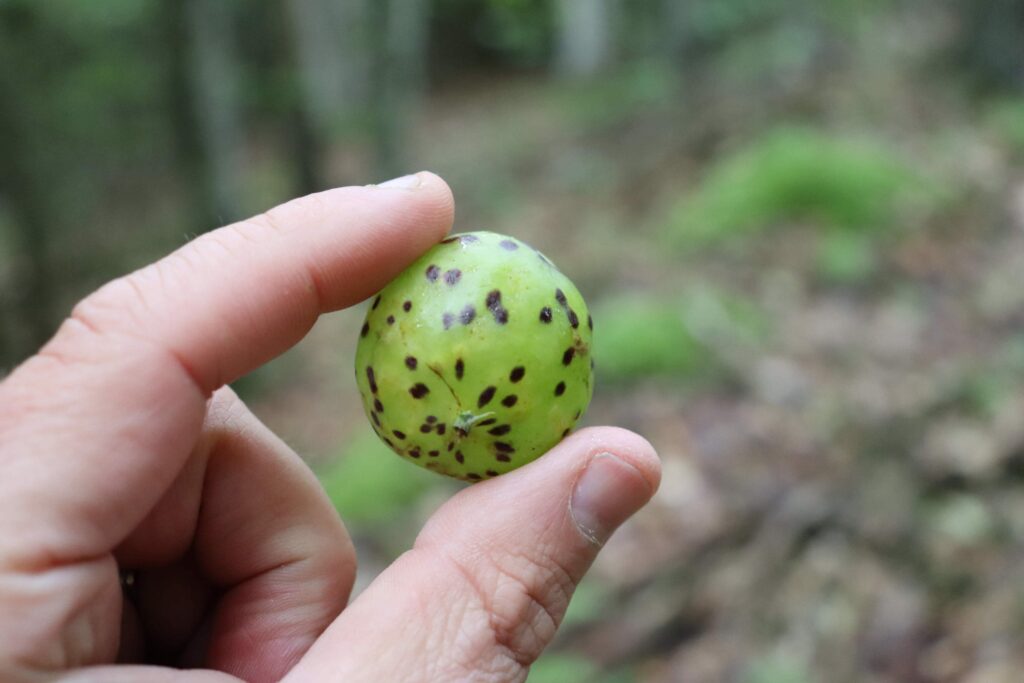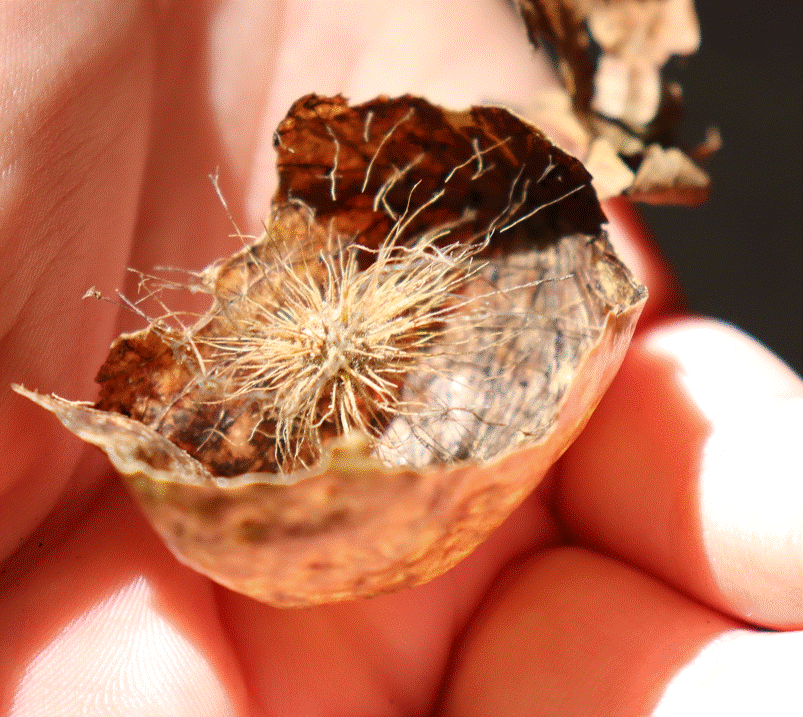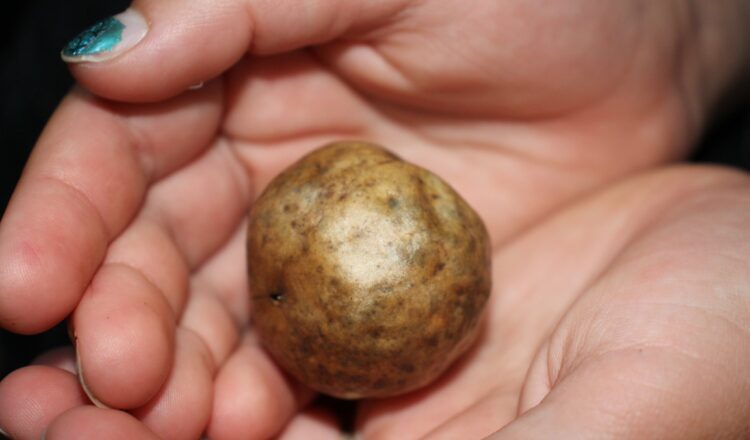By Bob Confer
When hiking through Allegany County’s forests in the late-summer and fall you will occasionally encounter at the base of oak trees a fragile, hollow, brown ball.
These strange sights always merit attention and questions about their origins. Many people assume that they are undeveloped acorns or some sort of strange fruit.
They are neither.

These orbs are called oak galls and are more commonly known as oak apples. These were leaves that, for lack of a better word, mutated and became homes for developing wasps.
The insect that lived inside the oak apple you’ll find now has as interesting and long life cycle that was spread across generations and years as well as various places on that oak tree.
In the summer of two years past, that wasp’s grandmother emerged from her own oak apple and then mated. The fertile female dropped to the earth, buried herself in the ground and then laid her eggs on the roots of that oak tree which the babies occasionally ate (when not dormant during the cold months) all through last year and into this spring.
That hatchling grew into adulthood and then crawled out of the ground to become the mother of “your” oak apple wasp. This past spring, she laid he eggs on a budding oak leaf, which grew around the larval stage of the wasp, providing both home and shelter for the wasp until it reached adulthood, bored a hole in the gall, escaped, and went about to do its business to repeat the cycle.
That explains how the insect got there, but what explains the strange ball?
Well, it’s a pretty interesting act of nature.

The mother of your wasp injected her egg into a bud or very young leaf. Those eggs are covered with and/or ooze a chemical that actually causes the plant’s genes to turn off or on and behave differently. That chemical is an imperfect or corrupted copycat of oak hormones which induces the special growth – the gall, the apple — to begin. When the larva hatches from the egg it continues to emit that substance which further inspires the development of its home. Rather than the oak creating a standard, perfect leaf, the “directions” provided by that chemical encourage the oak to make a mutant growth, a leafy ball, around the baby wasp, using the leaf in whole or growing as a tumor-like growth off the leaf.
In the center of that ball sits the developing wasp, which is surrounded by a network of fibers radiating from the center and connecting to the walls of the gall. Those fibers provide food to the growing wasp throughout its development. If you crack open an old leaf gall you will see what looks almost like a downy seed that you might see from a dandelion or thistle – that aged structure used to be that nourishment-delivery system.
This time of year, after the wasps have evacuated their bulbous home, the gall and/or its leaf die and they fall to the ground. You also might occasionally find green oak apples early in the summer when the live growth falls from the tree due to wind and other incidents. The larva in one of those brightly-colored treasures is certain to never see adulthood – that gall is no longer attached to the tree and neither it or its occupant can glean the benefits of photosynthesis and other plant processes. So, there you have it. That golf-ball sized oddity you found in the woods has an interesting story to tell. It was once something’s home, a home that was built through biological ingenuity. It’s truly amazing how Mother Nature’s creations react with and adapt to each other.







